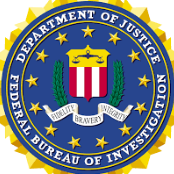90 day report blues....or maybe not?
-
Recently Browsing 0 members
- No registered users viewing this page.
-
Topics
-
-
Popular Contributors
-
-
Latest posts...
-
17
Paddy-stinians
Well nobody is perfect and that includes the President , he is after all only human, , I don't think he is anymore corrupt or inept than any other President, He is by nature a business man, he doesn't speak the same language as the career politicians, and they do not understand his methods but hey give the guy a chance, Its in everybody's interest that he is successful in his endeavours unless one happens to be an illegal immigrant that is. The majority of the media and his staunch and very vocal opponents focus exclusively on anything negative he says or does ,any positives are rarely reported, he is the devil incarnate for his actions regarding the illegals according to them, Perhaps they should focus on why a certain group of misguided people are so keen to invite illegal criminal aliens, who hate them , to reside in the USA and why this minority of leftists hate their own culture as much as they do I also hear daily about how he has destroyed women's rights ! is that solely due to his anti abortion views, all the whinging about women not having "control" over their own bodies anymore ! If only women exercised their "control" by utilising normal birth control methods, there would be little need for abortions, which are by anybody's standards a rather questionable medical procedure. So lets hear some criticism of these stupid women who are unable to understand basic contraception. Of course, its not their fault , it never is, Its so much easier to blame it all on the wicked President -
540
-
58
How dumb are you really Maga?
Two people. I agree with him, and have for years. Long before I heard it from him. Unlike lefties who get their jabbering points from the likes of Rachel, Whoopie and Joy. I just love the montages of the lefty minions all repeating the same mantra on the same day. Then expect to be taken seriously. I guess they send out memos. -
52
Crime Tragedy and Mystery: Aussie Lawyer Found Dead in Koh Samui
Ahh heroin, hell of a drug. -
1
Cryotherapy recommendations?
FWIW - Grok AI says BKK is really the only option and these are the places to enquire/try: WellMed Bangkok Clinic Vejthani Hospital Bumrungrad International Hospital PULSE Clinic MedConsult Clinic Sikarin Hospital (Sikarin Aesthetic Center) -
105
Report Thailand Named World’s Safest Holiday Destination in 2025
Nonsense. All the motorbikes move like 1 gigantic fish / hive mind. Just need the stones to take that first step into the street. So many can't hack it in Vietnam.
-
-
Popular in The Pub




.thumb.jpeg.d2d19a66404642fd9ff62d6262fd153e.jpeg)






Recommended Posts
Create an account or sign in to comment
You need to be a member in order to leave a comment
Create an account
Sign up for a new account in our community. It's easy!
Register a new accountSign in
Already have an account? Sign in here.
Sign In Now